Snow Geese Migration in Nebraska
|
From the Nature Conservancy : "The snow goose includes what were once thought to be three separate species, the blue goose, lesser snow goose and greater snow goose, but which are now considered to be the same creature. With a wingspan averaging between 53 and 56 inches, it migrates from its Arctic breeding grounds to southern winter sites in long curved U-shaped lines as high as 1000 feet. Snow geese feed primarily on aquatic plants, grasses and grain". From the Nature Conservancy : "Once protected, snow geese rebounded a little too well. The more than 4.5 million breeding pairs leave swaths of destruction between their arctic nests and southern wetlands and fields. Vast flocks now overgraze their feeding grounds, resulting in soil erosion, water evaporation, and increased soil salinity. While efforts are being made to save wetlands along their migration route, the fragile tundra recovers much more slowly, if at all". The following photos were taken in February 2009 in Central Nebraska. All Images © Ken Dewey, Applied Climate Sciences Group, School of Natural Resources, UNL |
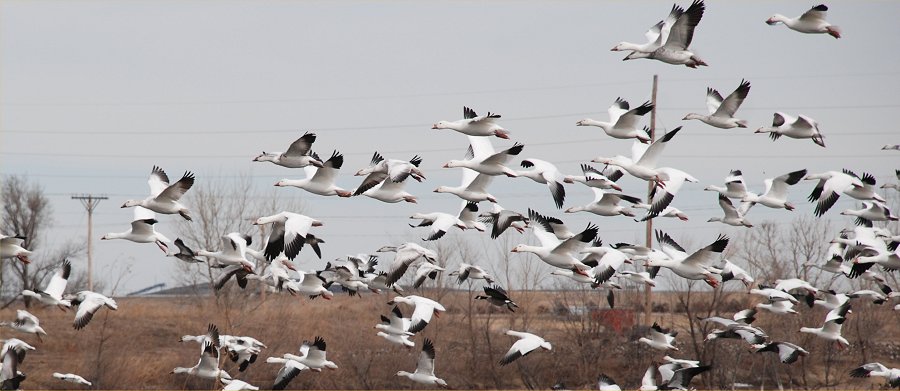
February 20, 2009: Snow Geese near
Lexington, NE.
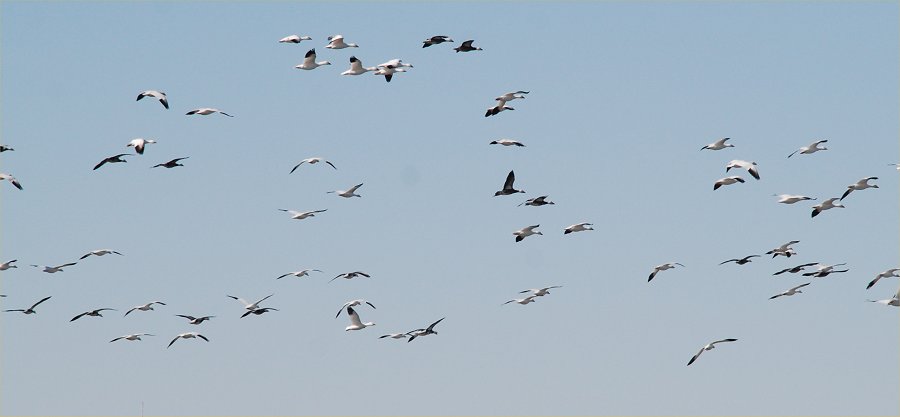
February 21, 2009: Snow Geese near Lexington, NE.
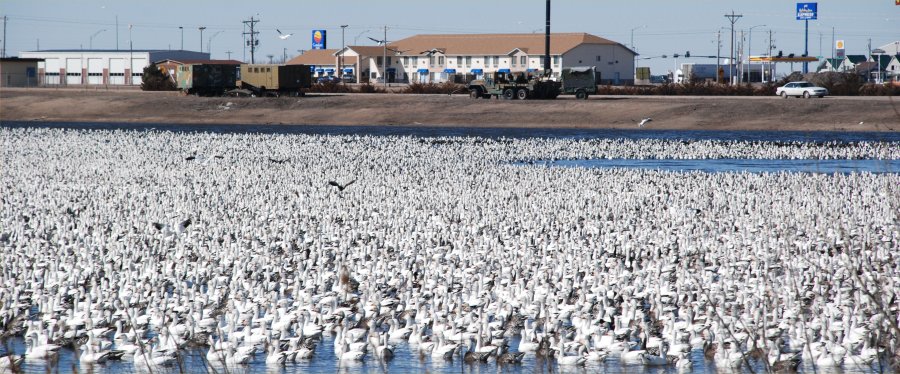
February 21, 2009: Snow Geese near Lexington, NE.
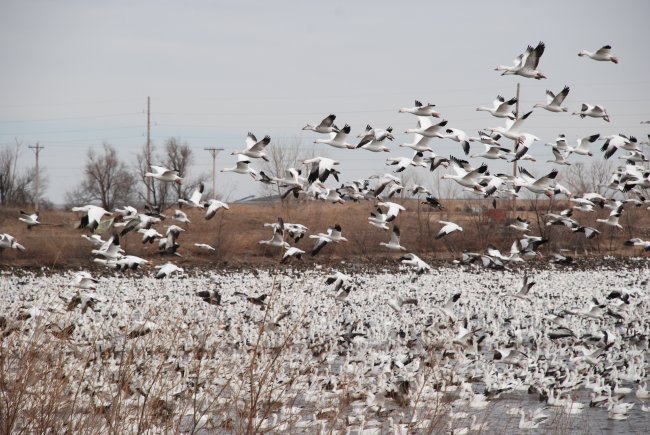
February 20, 2009: Snow Geese near Lexington, NE.
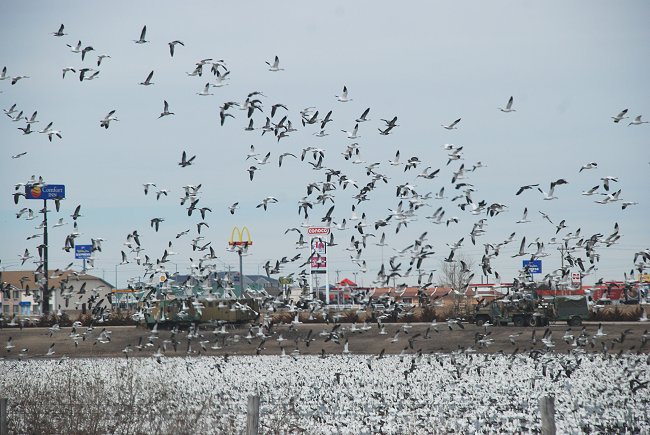
February 20, 2009: Snow Geese near Lexington, NE.
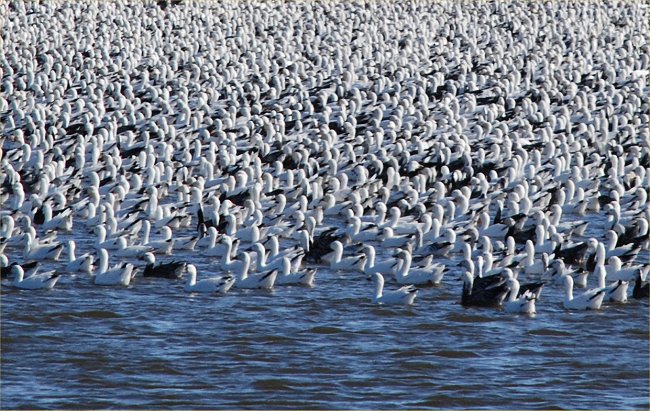
February 20, 2009: Snow Geese near Lexington, NE.
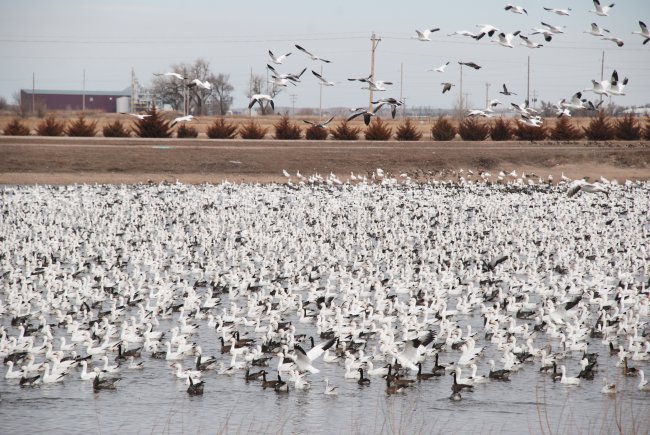
February 20, 2009: Snow Geese near Lexington, NE.
|
From Wikipedia: Snow geese breed from late May to mid August, but they leave their nesting areas and spend more than half the year on their migration to-and-from warmer wintering areas. During spring migration, large flocks of snow geese fly very high along narrow corridors, more than 3,000 miles from traditional wintering areas to the tundra. The Lesser Snow Goose travels through the Central Flyway, across some of the richest farmland in America. Traditionally, the geese wintered in coastal marsh areas where they used those short but very strong bills to dig the roots of marsh grasses for dinner. The first transition was to rice fields, where the geese could graze on weeds and eat the grain left behind by the combine. A decade later the geese had mastered field feeding and had diversified into wheat, corn, sorghum and practically any other field grain they encountered. The geese had also begun to graze in fall-seeded grain fields, especially winter wheat. Snow Geese now feed in grain fields as soon as they reach the prairies in September, and they continue to use agricultural fields until they leave the prairies in April and May on their way to Arctic breeding areas. Many biologists think the shift in winter feeding has led to the over-abundance of geese. Winter may be the time of year that sets the upper limit to goose populations. Now, the abundance of waste agricultural grain has provided Snow Geese with excellent forage and has improved the survival of wintering geese. The national wildlife refuges bought to protect habitat also help to increase survival. Therefore, more geese are returning to the Arctic to breed each spring. Those returning geese are in much better physical condition than was the case when geese did not use agricultural grain but foraged in marshland. |
| LINKS: |
| U.S. Fish and Wildlife |
| Nature Conservancy |
| Cornell Lab of Ornathology |
| Another Shot at Snow Geese |
| eNature |
RETURN to the main photo gallery index